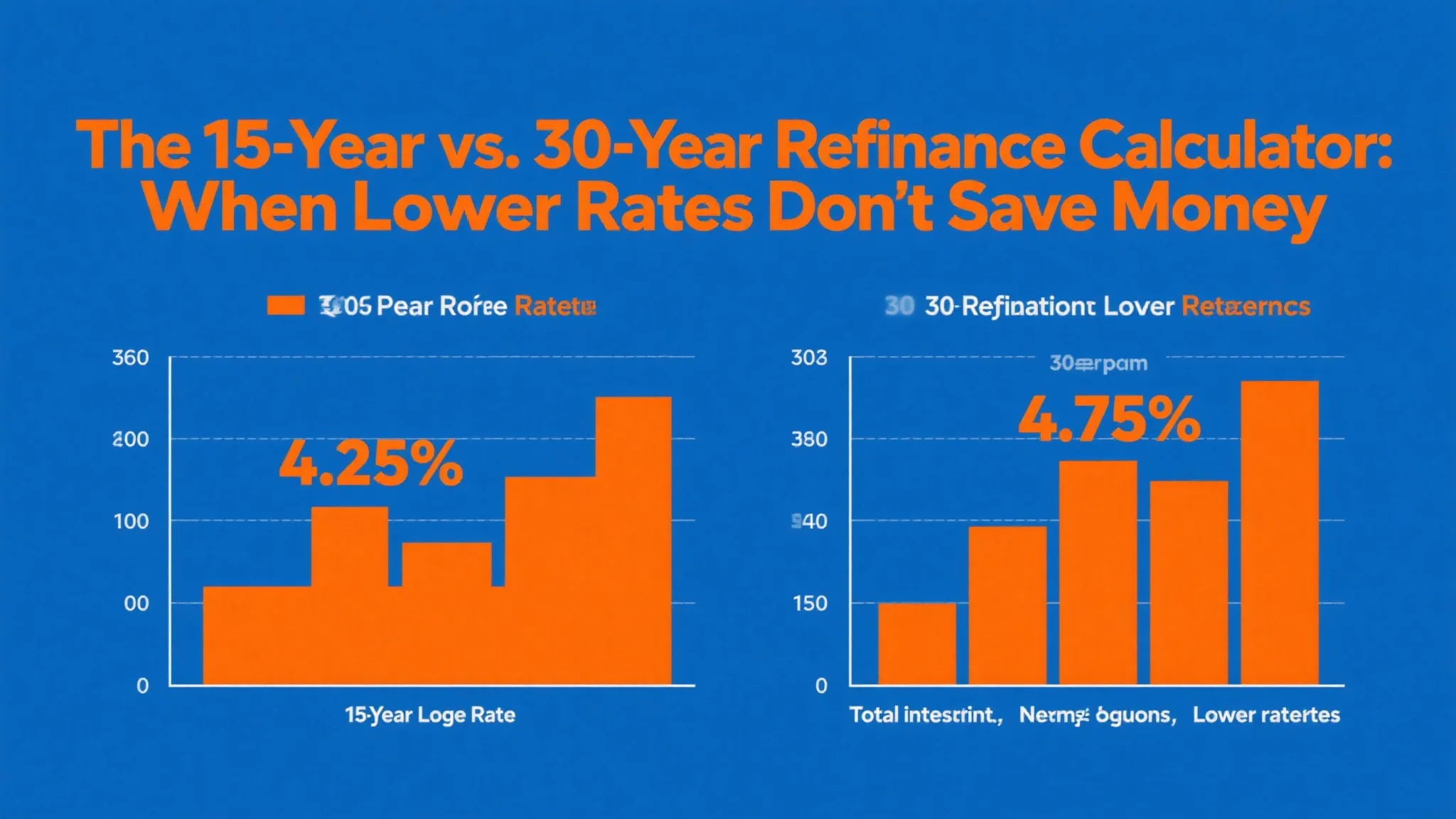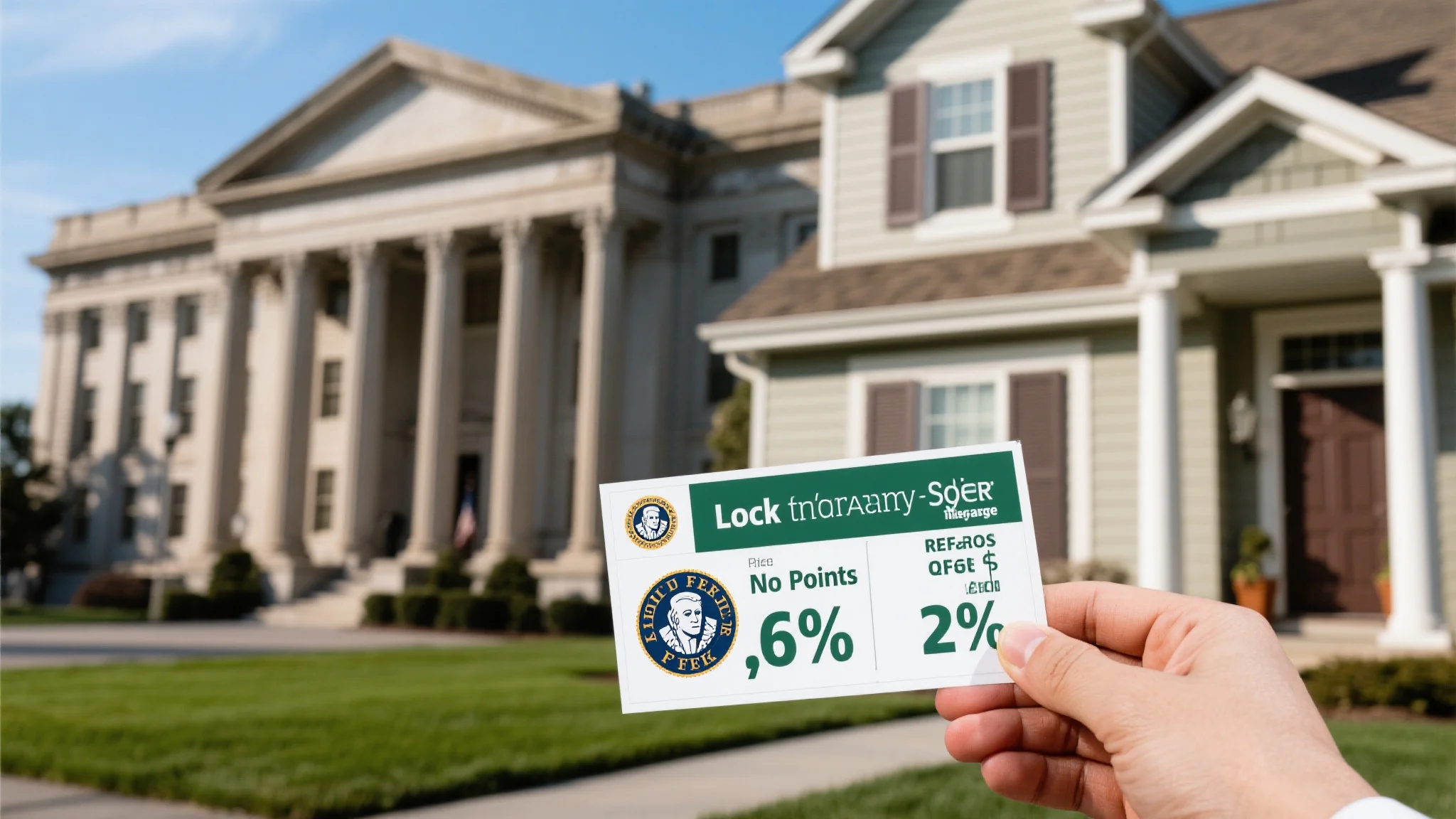Understanding the fundamental differences between 15 year vs 30 year refinance options requires a comprehensive analysis that extends far beyond simple interest rate comparisons. While conventional wisdom suggests that lower interest rates automatically translate to better financial outcomes, the reality of mortgage refinancing presents a more complex landscape where shorter-term loans with seemingly attractive rates can actually cost borrowers more money over time. The 15-year refinance option typically offers interest rates that are 0.25% to 0.75% lower than comparable 30-year mortgages, creating an immediate appeal for cost-conscious homeowners seeking to minimize their interest expenses. However, this rate advantage comes with significantly higher monthly payment obligations that can strain household budgets and limit financial flexibility in ways that many borrowers fail to fully appreciate during the decision-making process. The monthly payment difference between these two loan structures often ranges from 40% to 60% higher for the 15-year option, depending on the loan amount and prevailing interest rates. For example, a $300,000 mortgage at 6.5% for 30 years results in monthly payments of approximately $1,896, while the same loan amount at 6.0% for 15 years requires monthly payments of roughly $2,531 – a difference of $635 per month that must be sustained for the entire loan term. This payment differential represents more than just a budgetary consideration; it fundamentally alters the borrower’s financial risk profile and opportunity cost calculations. The higher monthly obligations associated with 15-year mortgages can limit a household’s ability to contribute to retirement accounts, build emergency funds, invest in education, or pursue other wealth-building opportunities that might generate returns exceeding the mortgage interest rate savings. Additionally, the reduced cash flow flexibility can create financial stress during periods of income volatility, job transitions, or unexpected expenses, potentially forcing borrowers into high-interest debt situations that negate any benefits achieved through the lower mortgage rate. The psychological impact of higher monthly payments also deserves consideration, as the pressure to maintain these elevated payment levels can influence career decisions, lifestyle choices, and overall financial well-being in ways that extend beyond pure mathematical calculations. Furthermore, the opportunity cost of the additional monthly payment amount – when invested in diversified portfolios, retirement accounts, or other appreciating assets – often exceeds the interest savings achieved through the shorter loan term, particularly in low-interest-rate environments where investment returns historically outpace mortgage rates over extended periods.
Effective utilization of a refinance calculator savings tool requires understanding the multiple variables and assumptions that influence long-term financial outcomes beyond the obvious monthly payment and total interest calculations. Most basic refinance calculators focus primarily on payment comparisons and total interest paid over the life of the loan, but these simplified analyses often fail to account for the time value of money, inflation effects, tax implications, and alternative investment opportunities that can dramatically alter the true cost-benefit analysis of different loan terms. Advanced refinance calculators incorporate present value calculations that discount future payments to current dollars, providing a more accurate representation of the real financial impact of different loan structures. These sophisticated tools also consider the tax deductibility of mortgage interest, which can significantly affect the after-tax cost of borrowing, particularly for higher-income borrowers in elevated tax brackets. The mortgage interest deduction, while modified by recent tax law changes, still provides substantial benefits for many homeowners, effectively reducing the true cost of mortgage debt below the stated interest rate. However, the value of this deduction varies based on individual tax situations, with some borrowers receiving minimal benefit due to standard deduction limitations or alternative minimum tax considerations. Refinance calculators that incorporate tax scenarios can help borrowers understand their actual after-tax borrowing costs and make more informed decisions about loan term selection. Another critical factor often overlooked in basic calculator analyses is the impact of prepayment strategies on loan performance. Many borrowers who choose 30-year mortgages with the intention of making additional principal payments fail to maintain this discipline over time, while others discover that systematic investing of the payment differential yields superior returns compared to mortgage prepayment. Sophisticated calculators allow users to model various prepayment scenarios and compare them against alternative investment strategies, providing insights into the optimal allocation of available cash flow. The break-even analysis functionality in advanced calculators helps borrowers determine how long they must remain in their homes to recover refinancing costs, a crucial consideration given that the average homeowner moves every seven to ten years. This analysis becomes particularly important when comparing 15-year and 30-year options, as the higher closing costs associated with some 15-year products may require longer payback periods that exceed typical homeownership durations. Market timing considerations also play a role in calculator accuracy, as interest rate environments, property appreciation rates, and investment market performance can all influence the relative attractiveness of different refinancing strategies over time.

Conducting thorough long term refinance cost analysis reveals that the apparent savings from lower interest rates on shorter-term loans can be misleading when evaluated within the context of comprehensive financial planning and wealth accumulation strategies. The total cost of borrowing encompasses not only the interest paid over the loan term but also the opportunity costs associated with higher monthly payments, the impact on overall portfolio diversification, and the flexibility to adapt to changing financial circumstances over time. Historical market data demonstrates that well-diversified investment portfolios have consistently generated returns that exceed typical mortgage interest rates over extended periods, suggesting that borrowers who choose lower monthly payments and invest the difference often achieve superior long-term wealth accumulation compared to those who prioritize rapid mortgage payoff. This phenomenon becomes particularly pronounced during periods of low interest rates, where the spread between mortgage costs and investment returns creates compelling opportunities for leveraged wealth building. However, this strategy requires discipline, market knowledge, and risk tolerance that not all borrowers possess, making the guaranteed savings of mortgage prepayment attractive for conservative investors or those lacking investment expertise. The analysis must also consider the impact of inflation on fixed-rate mortgage payments, which effectively reduces the real cost of debt over time as borrowers repay loans with increasingly devalued dollars. This inflation hedge benefit is more pronounced with longer-term loans, where borrowers can take advantage of fixed payment obligations that become progressively easier to manage as incomes rise with inflation. The 30-year mortgage structure provides maximum benefit from this inflation protection, while 15-year loans limit the time available to realize these advantages. Risk assessment represents another crucial component of long-term cost analysis, as shorter-term loans concentrate repayment obligations into a compressed timeframe that may coincide with economic downturns, job losses, or other financial disruptions. The flexibility provided by lower monthly payments on 30-year mortgages creates financial cushions that can prove invaluable during challenging economic periods, potentially preventing foreclosure or financial distress that could have catastrophic long-term consequences. Estate planning considerations also influence long-term cost analysis, particularly for older borrowers who may not live to see the full benefits of accelerated mortgage payoff. In such cases, the higher monthly payments associated with 15-year loans may reduce the estate value available to heirs, while the lower payments of 30-year mortgages preserve more assets for wealth transfer. The analysis should also account for the potential need for future borrowing, as homeowners with paid-off properties may find it more difficult and expensive to access home equity compared to those maintaining mortgage relationships with established lenders. Geographic and economic factors can significantly influence long-term cost projections, with property appreciation rates, local tax policies, and regional economic stability all affecting the relative attractiveness of different refinancing strategies. Borrowers in high-appreciation markets may benefit more from maintaining higher leverage through 30-year mortgages, while those in stable or declining markets might find greater security in rapid equity building through 15-year loans. The integration of these multiple factors requires sophisticated modeling that considers various economic scenarios, personal financial goals, and risk tolerance levels to provide meaningful guidance for refinancing decisions that will impact borrowers for decades to come.



